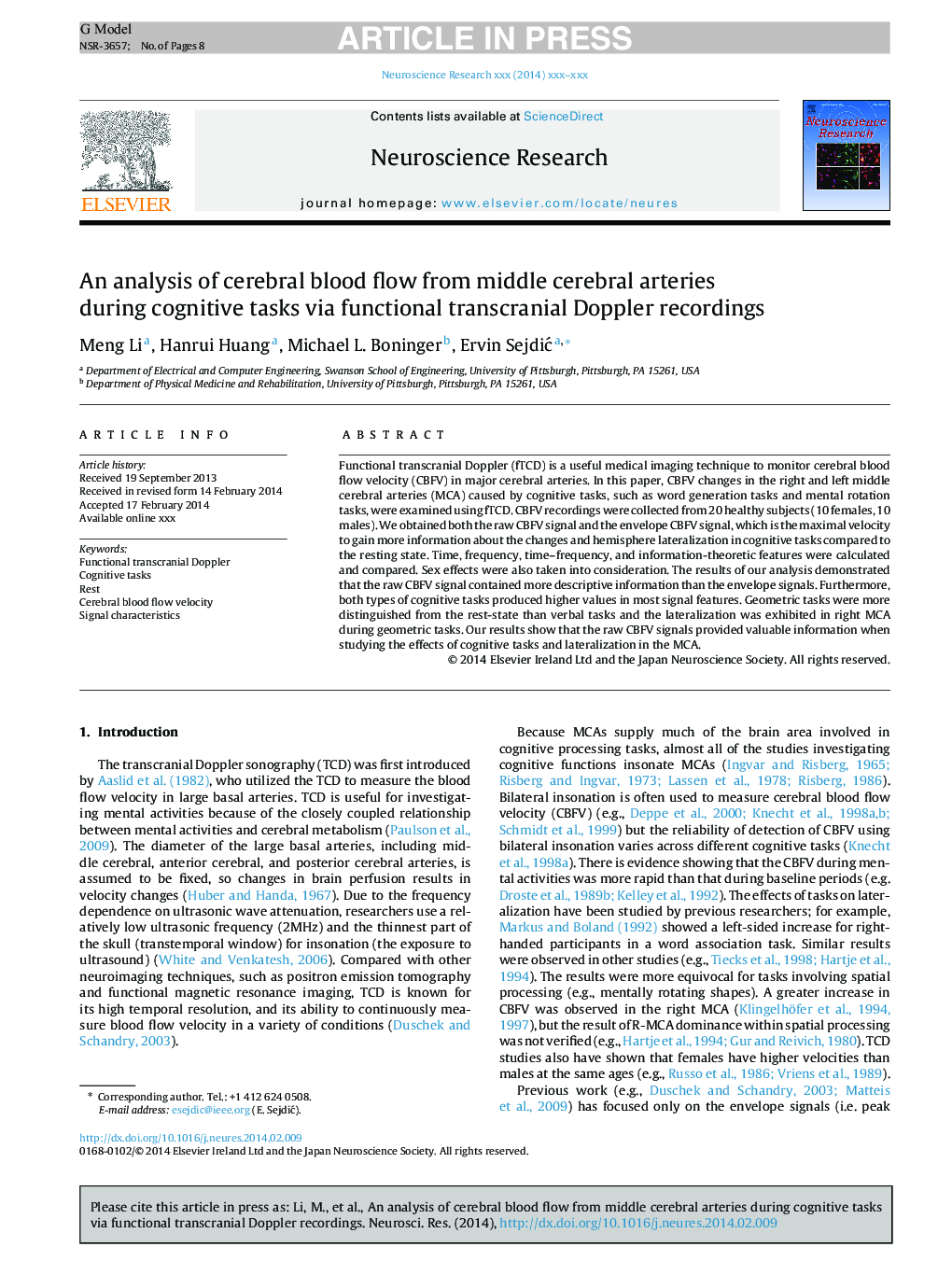| Article ID | Journal | Published Year | Pages | File Type |
|---|---|---|---|---|
| 6286229 | Neuroscience Research | 2014 | 8 Pages |
Abstract
Functional transcranial Doppler (fTCD) is a useful medical imaging technique to monitor cerebral blood flow velocity (CBFV) in major cerebral arteries. In this paper, CBFV changes in the right and left middle cerebral arteries (MCA) caused by cognitive tasks, such as word generation tasks and mental rotation tasks, were examined using fTCD. CBFV recordings were collected from 20 healthy subjects (10 females, 10 males). We obtained both the raw CBFV signal and the envelope CBFV signal, which is the maximal velocity to gain more information about the changes and hemisphere lateralization in cognitive tasks compared to the resting state. Time, frequency, time-frequency, and information-theoretic features were calculated and compared. Sex effects were also taken into consideration. The results of our analysis demonstrated that the raw CBFV signal contained more descriptive information than the envelope signals. Furthermore, both types of cognitive tasks produced higher values in most signal features. Geometric tasks were more distinguished from the rest-state than verbal tasks and the lateralization was exhibited in right MCA during geometric tasks. Our results show that the raw CBFV signals provided valuable information when studying the effects of cognitive tasks and lateralization in the MCA.
Related Topics
Life Sciences
Neuroscience
Neuroscience (General)
Authors
Meng Li, Hanrui Huang, Michael L. Boninger, Ervin SejdiÄ,
